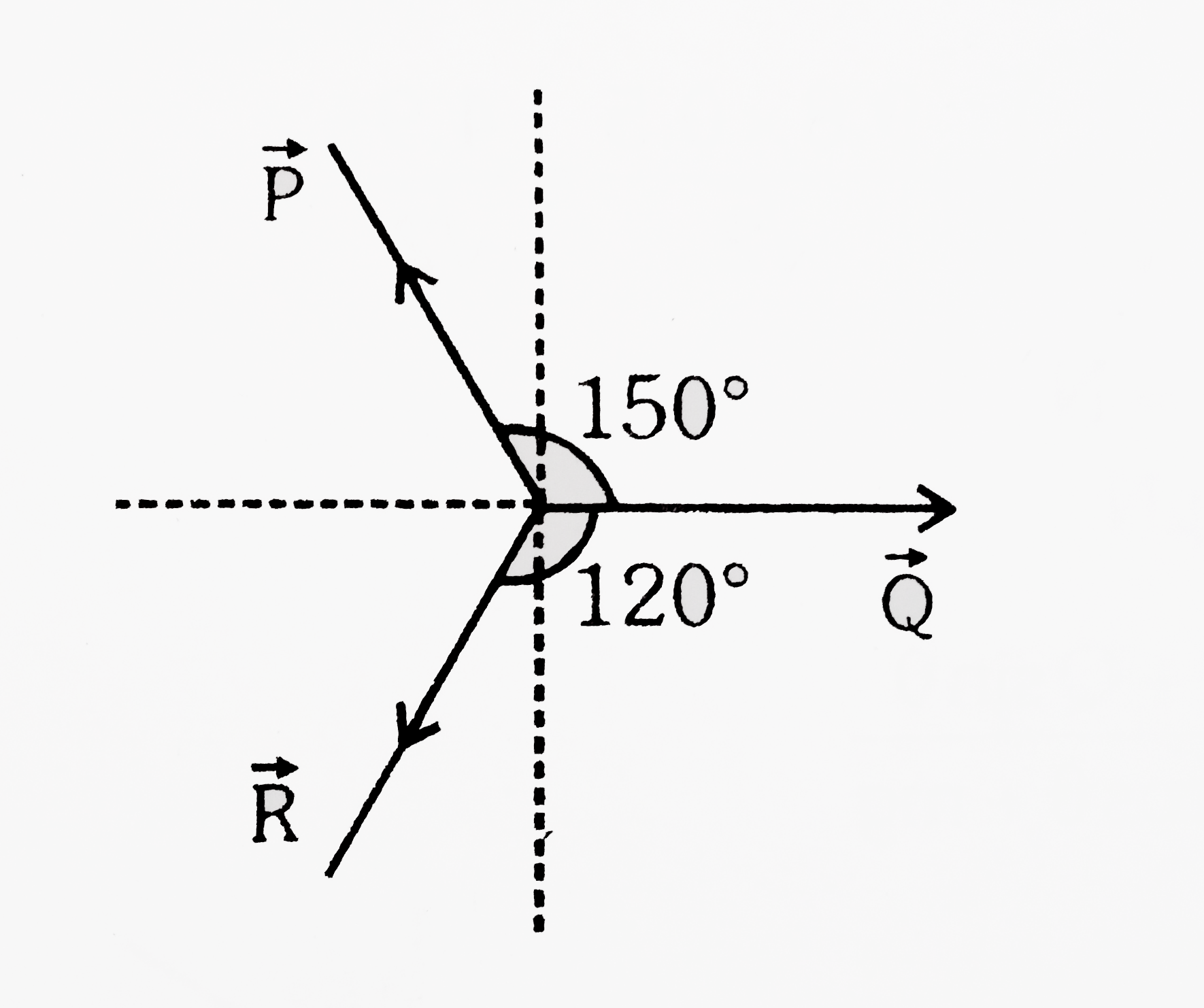Three forces P,Q and R are acting at a point in the plane. The angle between P & Q and Q & R are 150∘&120∘ respectively, then for equilibrium, forces P,Q & R are in the ratio
1:2:3
1:2:√3
3:2:1
31/2:2:1
The correct Answer is:D

Pcos60∘=Rcos30∘
∴P=R√3
Q=Psin60∘+Rsin30∘
Q=R√3×√32+R2=2R
P:Q:R=√3:2:1
Topper's Solved these Questions
- BOOK - ALLENCHAPTER - NEWTONS LAWS OF MOTIONEXERCISE - EXERCISE-III28videos
NEWTONS LAWS OF MOTION
- BOOK - ALLENCHAPTER - NEWTONS LAWS OF MOTIONEXERCISE - EXERCISE-I52videos
NEWTONS LAWS OF MOTION
- BOOK - ALLENCHAPTER - NEWTON'S LAWS OF MOTION & FRICTIONEXERCISE - EXERCISE (JA)4videos
NEWTON'S LAWS OF MOTION & FRICTION
- BOOK - ALLENCHAPTER - RACEEXERCISE - Basic Maths (Wave Motion & Dopplers Effect) (Stationary waves & doppler effect, beats)25videos
RACE
Similar Questions
Knowledge Check
- Question 1 - Select One
Three forces P, Q, R are acting at a point in a plane. The angle between P and Q and Q and R are 150∘and120∘ respectively, then for equilibrium, forces P, Q, R are in the ratio
A1:2:3B1:2:31/2C3:2:1D31/2:2:1 - Question 2 - Select One
Three forces P, Q and R are acting on a particel in the plane, the angle between P and Q and that between Q and R are 150∘ and 120∘ respectively. Then for equilibrium, forces P, Q and R are in the ratio
A1:2:3B1:2:√3C3:2:1D√3:2:1 - Question 3 - Select One
If P+Q=Rand|P|=|Q|=√3and|R|==3, then the angle between P and Q is
Aπ/4Bπ/6Cπ/3Dπ/2
If vector P,QandR have magnitude 5,12,and 13 units and →P+→Q=→R, the angle between Q and R is
View SolutionForces P and Q acting at a point O make an angle 150∘ between them. Their resultant acts at O, has magnitude 2 units and is perpendicular to P. Then in the same unit, the magnitudes of P and Q are
View SolutionThe resultant of forces P and Q acting at a point including a certain angle α is R, that of the forces 2P and Q acting at the same angle is 2R and that of P and 2Q acting at the supplementary angle is 2R. Then P:Q:R=
View SolutionIf the resultannt of two forces of magnitudes P and Q acting at a point at an angle of 60∘ is √7Q, then P/Q is
View SolutionIf the resultant of two forces of magnitudes P and Q acting at a point at an angle of 60∘ is √7Q , then P/Q is
View Solution

